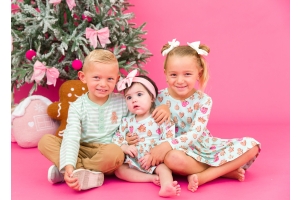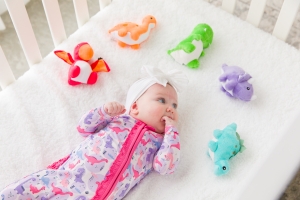Clothes for Kids with Sensory Issues
When it comes to clothing, comfort, and style go hand in hand, allowing children to express their personalities and navigate the world with confidence. However, for children with sensory issues, clothing can present unique challenges. Sensory issues can affect how a child perceives and processes sensory information, making certain fabrics, tags, or seams on a clothing item feel uncomfortable or overwhelming. In this article, we'll explore the world of clothes for kids with sensory issues, highlighting the importance of sensory-friendly boys and girls clothing and providing practical tips for selecting garments that prioritize comfort and style.
Understanding Sensory-Friendly Clothing
Understanding Sensory-Friendly Clothing
Sensory-friendly girls and boys clothing is specifically designed to accommodate the sensory needs of children who experience challenges in processing sensory information. It incorporates features that minimize discomfort and sensory overload, allowing children to feel at ease in their clothes. Key features of sensory-friendly clothing include soft and breathable fabrics, tagless labels, seamless construction, and adjustable closures. By prioritizing comfort and reducing sensory triggers, sensory-friendly clothing promotes confidence and independence in children with sensory issues.
The Benefits of Sensory-Friendly Clothing
Sensory-friendly clothing offers numerous benefits for children with sensory issues. It not only addresses their unique sensory challenges but also promotes self-expression and positive sensory experiences. By providing comfort and minimizing sensory triggers, these clothes can help reduce anxiety and meltdowns, allowing children to focus on exploring the world around them. Sensory-friendly clothing empowers children to participate in activities, socialize, and develop their own personal style while feeling supported and comfortable.
Common Challenges in Clothing Selection
Children with sensory issues may face various challenges when it comes to clothing. Certain fabrics can cause discomfort or skin irritation, tags may feel scratchy and irritating, and seams can create an uncomfortable sensation. These sensory triggers can lead to frustration, sensory overload, or reluctance to wear certain types of clothing. Understanding these sensory sensitivity challenges is crucial in selecting clothes that accommodate sensory needs and promote positive sensory experiences for children.
Types of Sensory-Friendly Clothing
- Tagless Labels: Sensory-friendly clothing often features tagless labels, eliminating the discomfort caused by traditional tags. Instead, garment information is printed directly onto the fabric, providing a smooth and irritation-free experience.
- Seamless Construction: Clothes with seamless construction minimize sensory triggers caused by seams rubbing against the skin. Seamless socks, underwear, and tops are available, providing a seamless and comfortable fit.
- Soft Fabrics: Sensory-friendly clothing typically utilizes soft and gentle fabrics such as organic cotton, bamboo, or modal blends. These fabrics offer a soothing touch and reduce the risk of irritation or discomfort.
- Adjustable Closures: Clothes with adjustable closures, such as Velcro straps or elastic waistbands, allow for flexibility and customization. This ensures a comfortable fit for children with sensory sensitivities or specific body proportions.
Tips for Selecting Sensory-Friendly Clothing
Choosing sensory-friendly clothing requires careful consideration. Here are some tips to keep in mind:
- Fabric Selection: Opt for soft, breathable fabrics like cotton, bamboo, or modal blends. These fabrics are gentle on the skin and provide comfort throughout the day.
- Comfort and Flexibility: Prioritize clothing that allows for freedom of movement and flexibility. Avoid tight or restrictive garments that may cause discomfort or sensory overload.
- Seam Placement: Look for clothing with flat or hidden seams to prevent irritation or discomfort. Seamless designs are particularly beneficial for children with heightened sensitivity to tactile sensations.
- Easy Dressing: Choose clothes that are easy to put on and take off, such as those with wide neck openings, stretchy materials, or front closures. This promotes independence and reduces frustration during dressing routines.
- Specialized Brands: Explore brands that specialize in sensory-friendly clothing. These brands understand the unique needs of children with sensory issues and create garments specifically tailored to provide comfort and style.
Adaptive Clothing for Kids with Sensory Issues
Adaptive clothing is another option worth considering for children with sensory issues, especially those with specific sensory or physical needs. Adaptive clothing incorporates additional features to address challenges related to dressing and movement. Examples include clothing with Velcro closures for ease of dressing, adjustable waistbands to accommodate different body shapes, and hidden pockets or seams to prevent discomfort. Adaptive clothing provides practical solutions that enhance independence and comfort for children with specific sensory or physical requirements.
Frequently Asked Questions (FAQs)
Q: Are sensory-friendly clothes only for children with diagnosed sensory issues?
A: Sensory-friendly clothing can benefit any child who experiences sensory sensitivities or discomfort. It provides comfort and promotes positive sensory experiences for a wide range of children.
Q: Where can I find sensory-friendly clothing for kids?
A: Many clothing brands and retailers now offer sensory-friendly options. Explore specialized brands, online marketplaces, or consult with occupational therapists or support groups for recommendations.
Q: Can sensory-friendly clothing be stylish and fashionable?
A: Absolutely! Sensory-friendly clothing blends comfort and style, ensuring that children can express their unique personalities while feeling comfortable and supported.
Q: How can I ensure the clothes will fit my child properly?
A: Refer to sizing charts provided by brands or retailers and measure your child accurately. Consider adjustable closures and flexible materials to accommodate growth and individual body proportions.
Additional Resources and Support
For further exploration and support, consider the following resources:
1. The Sensory Processing Disorder Foundation: www.spdfoundation.net
2. The STAR Institute for Sensory Processing Disorder: www.spdstar.org
Dressing with Care and Comfort
Choosing clothes for kids with sensory issues is an opportunity to prioritize their comfort, independence, and self-expression. Sensory-friendly and adaptive clothing options allow children to navigate their world with ease, reducing sensory challenges and promoting positive sensory experiences.
By understanding their unique needs and considering the features and benefits of sensory-friendly clothing, you can empower your child to dress with confidence, comfort, and style. Let's ensure every child can embrace the world, one sensory-friendly outfit at a time.









